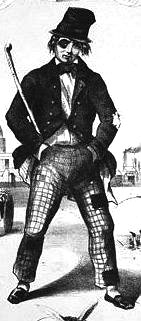Overview
Address: 87 Broadway
History:
One hundred and thirty five years ago, in the months of April and May, members of the town council made a far-sighted decision that resulted in the town hall and theatre space we have today.
In April 1875, council had begun to develop plans for a public market to meet the needs of their rapidly growing community. Later that same month, the drill hall where council had been meeting burned to the ground, and council was now without council chambers and still in need of a public market.
Suddenly, council had to consider the construction of both a town hall and a public market.
Fortunately, these early town fathers took a very enlightened view of the issue and after much discussion on May 25, 1875 decided in favour of a building that combined both hall and market with an agreed-on budget of $7,000. Work began in August and by March 1876, the butchers’ stalls in the ground floor of the west wing were being outfitted. In May, council learned that the costs were well over budget and to complete the building, it would cost $10,000.As we know, the building was completed as they had intended. The butchers’ stalls were rented, the council chambers put into operation and on the second floor an assembly hall was available for meetings, entertainment, balls, and receptions. On May 24, the Primitive Methodists had the privilege of being the first group to use the assembly hall for a rental fee of just $6. Their concert was so well attended that “many were unable to find seats.”
It was this assembly hall that became known as the Orangeville Opera House. In 1876, it was a rather different space from what we know today. There was a small stage at the east end, as it is today, but the floor was flat and there were large windows on either side along the length of the hall. It was a multi-purpose space that suited the needs of a growing town.
As you might expect, this hall has undergone several renovations. In 1913. the stage was relocated to the west end of the space and the floor was raked to provide better visibility to those people sitting in the back rows, and the hall became known as the Orangeville Opera House. Until the late 1960s, the Orangeville Opera House was the home to concerts and theatrical productions, as well as lectures and most probably the occasional public meeting. Unlike today, the theatrical productions were usually provided by travelling production companies that came with the plays, costumes, and props but relied on locals to provide the talent.
In 1969, however, having a space for live theatre productions no longer seemed to be desirable and this space was converted to offices and meeting space for the Dufferin County Board of Education.
By the early 1980s, the board had its own building and so the Town of Orangeville took over the space.
The year 1994 saw another round of renovations, intended to restore some of the building to its original layout. The council chamber and mayor’s office returned to their original location on the ground floor and administrative offices were installed where the butcher stalls had been. The Opera House underwent yet another transformation. The stage was relocated to the east of the hall, the floor now raked in the opposite direction, and modern sound and lighting systems installed. The Opera House was now a permanent theatre space rather than the more generic assembly hall of 1875. It has, however, become home to Theatre Orangeville, our very own permanent theatre company and a significant tourist attraction.
Roberts, Shelagh. "Discover...the history of the Orangeville Opera House", Orangeville Banner, 10 Mar. 2010, www.orangeville.com/community-story/1483373-discover-the-history-of-the…

